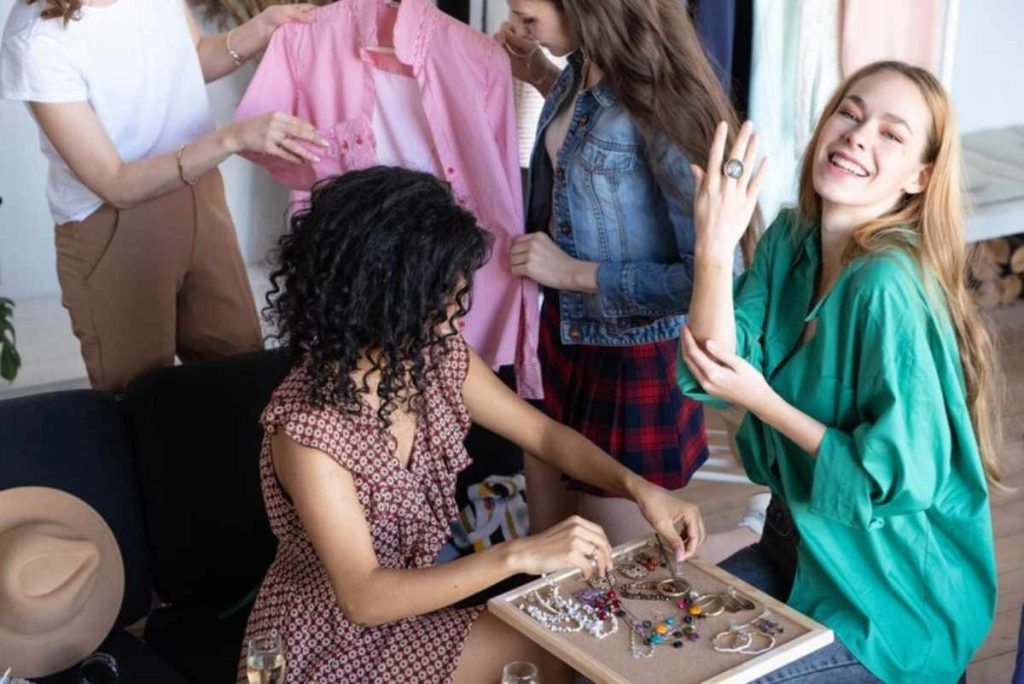The Great Depression was a pivotal time in American history, spanning from 1929 to the late 1930s, impacting people from all walks of life. Families faced extreme poverty, unemployment, and widespread hardship.
However, despite these challenges, fashion evolved in unique ways, reflecting the resilience and creativity of the era. Great Depression Fashion Farmers for Kids’ Girls became a practical reflection of their circumstances, focusing on simplicity, durability, and affordability.
The fashion choices for kids and girls during the Great Depression differed significantly from those we see today. In this article, we will explore how Great Depression fashion for farmers’ kid’s girls adapted to meet the needs of the time, offering insights into the fabrics, colours, and practical designs that defined the era.
We will also examine the influence of socio-economic conditions on the clothing of children in farming families and how parents adapted and upcycled materials to ensure their children were dressed as well as possible in tough times.

Fashion During the Great Depression: An Overview
The 1930s were marked by widespread economic difficulty and uncertainty. With mass unemployment and the collapse of banks, families were forced to make do with what they had, which significantly impacted Great Depression Fashion Farmers for Kids’ Girls particularly in rural farming communities.
At the heart of Great Depression fashion were three key themes:
Practicality: With most families struggling to make ends meet, clothes had to be functional and durable. Farmers’ children, including girls, needed clothes that would withstand the wear and tear of hard outdoor work.
Economy: With limited resources, families would often repurpose old clothing, make do with hand-me-downs, and sew garments themselves using inexpensive materials.
Simplicity: The fashion of the time was modest. Flashy, extravagant clothing was out of the question for most, and practicality took precedence over style.
The Influence of Rural Life on Farmers’ Kids Girls’ Fashion
For farming families, life was often more physically demanding and focused on survival, directly influencing the fashion choices of kids and girls. Clothing needed to be durable and simple, designed for outdoor work, chores, and long hours spent in fields or helping with farm animals. The clothes had to be easy to maintain and repair, as they had to last long periods.
The Great Depression fashion for farmers’ kids and girls typically consisted of several practical pieces, including:
Dresses and skirts: Girls’ dresses during the Depression were often simple, knee-length, and made of inexpensive cotton or wool. These dresses were designed for practicality, comfort, and easy movement. Dresses often had long sleeves, but some were sleeveless or short sleeves to accommodate the warm summer months.
Aprons: Aprons were essential for farm girls, as they wore over dresses to protect clothing from dirt and stains during daily chores. Aprons were often homemade from scraps of fabric, patched together from older garments, and were common in the wardrobes of Depression-era children.
Knit stockings and bloomers: In colder months, knit stockings or bloomers were worn for warmth. These pieces were often made from wool or cotton, which could be repurposed from old adult garments.
Hats and bonnets: Wide-brimmed hats or sun bonnets were worn to protect the face and neck from sun exposure while working outdoors. These were essential for rural life, especially during the hot summer, and were often made from simple materials like straw or cotton.
Fabrics and Materials for Farmers’ Kids Girls
During the Great Depression, it was common for families to reuse and repurpose whatever materials they had available. This was especially true in farming households where the economic struggle meant few resources to spend on clothing.
Fabrics for kids’ girls’ clothing were typically sourced from inexpensive materials. The most common fabrics used during the Depression for children’s clothing were:
Cotton: This was the go-to fabric for everyday wear. Cotton was affordable, durable, and easy to clean, making it a practical choice for working children.
Wool: Wool was another standard fabric, especially during the colder months. It was warm and durable, though often repurposed from old clothing.
Denim: Denim was frequently used to construct overalls and dresses, particularly for farm girls who needed rugged clothing to survive the physically demanding farm life.
Flannel: Flannel was often used to make warm, comfortable shirts and skirts. It was soft and ideal for colder weather, adding extra warmth for kids in the winter.
DIY Fashion and Upcycling During the Great Depression
The Great Depression fashion for farmers’ kids and girls was marked by innovation and resourcefulness. With limited resources, many parents would make their children’s clothing by hand. This often involved upcycling old fabrics, hand-me-downs, and scraps of materials.
For example, a girl’s old dress might be turned into a new one by cutting it up and stitching it back together. Old shirts could be repurposed into skirts, and adult clothing could be altered to fit children. While this might sound like a simple necessity, it also encouraged a certain level of creativity, as families would experiment with patchwork designs or hand-stitching new pieces.
Accessories for Farmers’ Kids Girls in the 1930s
While accessories were far less common in Great Depression fashion for farmers’ kids and girls, they still played a role in personalizing outfits. Items like scarves, hats, and homemade jewellery were often used to add a bit of flair to otherwise simple outfits.
Scarves and headbands: Girls would often wear scarves or homemade headbands to keep their hair tidy or add style to an otherwise plain outfit. These were usually made from leftover fabric or old garments.
Belted waistlines: Dresses and skirts would often be cinched with a belt to give them some shape. A belt was one of the simplest ways to make a plain dress look more fashionable.
Homemade Jewelry: Crafting simple jewellery out of beads, buttons, and other materials was an everyday activity for Depression-era children. They would create necklaces or bracelets, using these items to accessorize their outfits.
The Influence of Hollywood and Pop Culture
While most of the population could not afford extravagant fashion, Hollywood films and popular stars like Shirley Temple and Judy Garland influenced the imagination of many Depression-era children. For girls growing up on farms, these stars represented an idealized image of beauty and glamour often unattainable in everyday life.
However, even in rural areas, young girls sometimes emulated these stars by adding small touches of glamour to their daily wear, like attempting to mimic the styles seen on the big screen.
The Lasting Impact of Great Depression Fashion on Today’s Styles
The Great Depression fashion for farmers’ kids and girls influenced the families that lived through the era and later generations. Many creative, resourceful clothing-making methods, such as upcycling and repurposing, would eventually become part of the more significant sustainable fashion movement.
These influences can still be seen today, where the desire for simple, durable clothing that focuses on functionality and comfort is still a key part of modern fashion for children.
Additionally, the impact of Depression-era style on the overall look of the 1930s is still apparent in vintage-inspired clothing lines and collections. The minimalist aesthetic and the idea of clothing as a practical necessity rather than a luxury resonates with modern sustainable fashion enthusiasts.
Conclusion
The Great Depression fashion for farmers’ kid’s girls was a direct reflection of the times—marked by simplicity, resourcefulness, and practicality. And despite facing immense hardship, families, especially in rural farming communities, adapted creatively to provide their children with clothing that met their needs.
Farmers’ kids and girls wore clothing made from inexpensive materials like cotton, wool, and denim and would often repurpose old garments to create new ones.
Though it was a time of economic difficulty, the spirit of innovation and self-sufficiency that characterized the Great Depression fashion for farmers’ kids and girls would leave a lasting legacy on the fashion world, inspiring future generations to embrace sustainability, creativity, and resilience in times of hardship.
Frequently Asked Questions(FAQs):
What kind of clothes did farmers’ kids wear during the Great Depression?
Farmers’ kids, including girls, wore simple, practical clothing like cotton dresses, wool skirts, denim overalls, and aprons, often made from upcycled materials.
Why was fashion so simple during the Great Depression?
Due to economic hardship, families prioritized practicality and durability over style, using inexpensive materials and repurposing old clothes to make ends meet.
How did farmers’ kids’ fashion reflect their lifestyle?
The clothing was designed for physical labour, focusing on comfort and durability. Girls wore dresses and skirts suited for daily chores on the farm.
Did farmers’ kids follow fashion trends?
While trends like those seen in Hollywood movies existed, most farmers’ kids wore practical clothing rather than trendy outfits, often influenced by necessity over style.
How did the Great Depression influence future fashion?
The resourcefulness of the era, including upcycling and practical design, inspired later sustainable fashion trends, focusing on durability and reuse.











